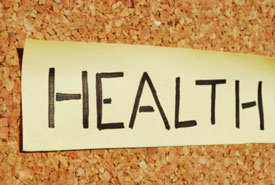But how many?
 In a recent post, we talked about the importance of fats for a healthy lifestyle. If there is a bad guy between fats and carbohydrates, it’s more often the carbohydrates, not the fats—which runs contrary to what we’ve been told for decades.
In a recent post, we talked about the importance of fats for a healthy lifestyle. If there is a bad guy between fats and carbohydrates, it’s more often the carbohydrates, not the fats—which runs contrary to what we’ve been told for decades.
Fats and carbohydrates fall under the heading of macro nutrients. Both are burned as fuel to produce energy for our bodies, as well as make different critical processes possible. Both must be consumed in the right quantities to give our bodies the fuel and resources it needs without eating too much. Because what are bodies don’t need gets stored as fat and increases risk factors for things like Type 2 Diabetes and cardiovascular disease.
There is one other group of macronutrients that is just as important – the proteins.
As we’ve written before, your body uses protein to build and repair muscle and other soft tissues. Protein comes from meats and fish, legumes, seeds and nuts, eggs, and supplements such as whey protein and plant-derived protein powders. Your body can’t store protein like it can fats and carbohydrates. The more you work your muscles, the more protein you must eat.
How much should you eat?
It depends on your gender, type of physical activity, and goals. Many nutrition guidelines suggest only about a third of a gram of protein per pound of body weight. But if you are trying to build lean muscle mass through moderate to intense training at the gym, you may need three or four times that, or even more. Here is an interesting online calculator.
Aside from the debate over how many grams of carbohydrates, fats, or proteins you should eat in a day is an even more fundamental question – how many calories in total should you eat in a day?
Whether anything you eat gets stored as fat depends on how many calories of energy you are eating versus how many you are burning through exercise or other daily activities.
To answer this question, you must first know your Basal Metabolic Rate (BMR).
What is my BMR?
This is how many calories your body burns in a 24-hour period while at rest – at rest means to be relaxed and unstressed, not too hot or too cold, and not in the middle of digesting a heavy meal.
Everyone’s BMR is different. It’s a function of your age, gender, and body mass not including fat. Studies of adults have charted BMRs ranging from as low as 1,027 calories per day to as many as 2,500.
The higher your BMR, the easier it is to stay slim. The lower it is, the easier it is to put on weight, depending on your eating habits. We always hear that the typical adult diet should be around 2,000 calories a day, but this is just a general rule of thumb that also assumes a certain level of physical activity. Some people will gain weight at that level, others will lose, and the rest will be right in that zone where they hold steady.
How do I calculate my BMR?
There are online calculators that can give you a rough estimate. One of our patients we have featured as a guest blogger here before, Leo Valiquette, tried several:
MyFitnessPal‘s online questionnaire gave him a reading of 1,586 calories a day.
BodyBuilding.com‘s online questionnaire gave him a reading of 1,648.
An InBody body composition analysis came back with 1,856.
The first two on this list were calculators that made their estimates based just on his stated age, height, weight, and gender.
Then he tried something a little more scientific. A health supplements store near our clinic in Kanata recently added an InBody machine for body composition analysis. Customers can get detailed readouts of their BMR, as well as their percentage of body fat, water mass, and other metrics.
This machine uses impedance – the body’s resistance to a very low electric current, to measure these things. Just stand barefoot on metal plates and hold the handles for a minute or so, and the machine does the rest. It doesn’t hurt.
This kind of in person test is bound to be more accurate than a short online questionnaire. The difference, of course, is that the questionnaire is free and the impedance test can cost around $100. The good news for Leo is that the more accurate option yielded a higher BMR.
That means he can eat more than the other two methods suggested. And in fact, he has to eat more for his body to get the fuel he needs, especially if he his hitting the gym a few times a week, since each of those training sessions could be burning around 500 to 600 additional calories per day.
What is your BMR?
Those online calculators can be a good place to start, while the impedance test is the way to go for more insightful and personalized data. But either option should be coupled with a good calorie counter and food journal tool like MyFitnessPal that will also track how much carbohydrate, fat, and protein you are eating in a day.
Your bathroom scale will tell you soon enough if your weight management efforts are on track or in need of some adjustment.
